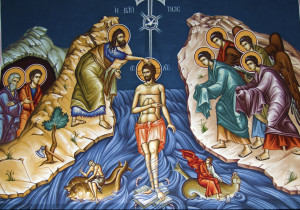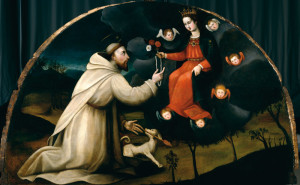My apologies for the prolonged silence. Lots of traveling and the like…and monastic listening.
Rod Dreher, one of the few bloggers I read from time to time, asks, “Can Christians Afford the Leadership We Have?” In the post, he seems to assume that leadership in Christianity is clear. The only leader he mentions by name is Pope Francis. When he writes about “Christians,” I think he means, “American Christians,” and to some lesser extent “Western European Christians (he makes reference to recent slaying of Fr. Jacques Hamel).” The underlying message is that things are much worse for such Christians than most seem to think, and it’s the job of leadership to sound the alarm and prepare Christians for the coming assault on religious freedom, etc.
A number of thoughts, still disconnected:
- How much is a problem of leadership and how much discipleship? Cardinal George could hardly have been clearer about the possible coming struggle. What has the Chicago Church done in response? And who is responsible for responding if someone does sound the alarm? I don’t have clear answers to these questions, but focusing on leadership, and on a very narrow sampling of it, certainly raises them.
- Another point the late Cardinal made: when the Holy Spirit wishes to renew the Church, he sends saints. This seems appropriate on the feast day of the one the greats, St. Dominic. Innocent III, one of the most powerful popes ever, didn’t think up St. Dominic nor St. Francis of Assisi when faced with heresies, the fraying of society due to economic changes, and so on. “Where are the saints?” Cardinal George asked me once. I think that they are around, but we are still, in my opinion, at too early a stage of change to know what precisely is called for. All we can do is strive for holiness and be prepared. That preparation may include preparing to give our lives for the faith.
- I must confess that it is difficult for me to sympathize with the widespread assumption that we don’t live in an age of martyrs, at least in “civilized” places like the United States. The world is still the world, and will always be a source of hostility to the faith. Preachers may not have stressed this enough in recent decades, that is true. And, as I’ve pointed out elsewhere, where we used to celebrate more frequently the very unworldly sorts of saints like martyrs and monks, we’ve more recently populated the liturgical calendar with figures who didn’t have to give their lives for the faith, at least in the obvious way involved in red and white martyrdom. But any familiarity with the early church, Nero, Diocletian, and..ahem..the Cross, really offers us no excuse for imagining that Christian faith will never, ever make hard demands of us. I get why people avoid that, but again, is this a failure in leadership (who wants to hear this?) or a more general failure of imagination?
- Another failure of imagination takes the general peace and prosperity that many of us have enjoyed in our country for many decades to be normative for life in general. Having worked in inner cities, and having siblings and close friends who have done social work and ER duty in big cities, I can say that we live in an extraordinarily violent country, and this isn’t about guns. It goes much deeper, and the use of guns is just a symptom. Curbing access to guns will not change the spiritual poverty of our land, which cuts across all groups [it is not politically expedient to care too much about inner cities, since the residents of the areas don’t fund campaigns, for example, so it’s a calculated sacrifice not to look at the ways in which the whole culture contributes to this violence]. The United States military/industrial complex is a force for widespread destruction and bloodshed in numerous places. And, of course, we kill a million babies in the womb each year. So the idea that anybody is safe is, in my opinion, pretty thin.
- A long string of excellent popes has been a mixed blessing for Catholics. On the one hand, who can object to the remarkable leadership we’ve enjoyed at that level for a century or more? On the other hand, as Abbot Philip Lawrence once said to me, we can get lazy in our faith and practice if we imagine that we can depend on there being good popes. The current Catholic habit of reading everything the Holy Father writes and says, and interpreting this to maximal effect is a dangerous one, even if you think the pope is completely orthodox. He is the bishop of Rome, the guarantor of Church unity, and has many other important functions. But he is not, and can never be, pastor to every Catholic on the planet.
- And what we need are pastors, and masters of the spiritual craft. As I’ve hinted, the problems in our culture are very deep and hidden. In my experience in the monastery, especially for the past twelve years as superior, I’ve come to the conclusion that things are, indeed, a lot worse than people might imagine, but this is not so much because of scheming by human beings who appear to be enemies of the faith. Rather, the practice of genuine virtue and theology has been replaced by an extremely subtle ersatz form of the same. A widespread recovery will take time. But it is certainly possible. God has allowed this for a purpose, and so we might as well get to work repenting and reforming our lives. And any of us can do this; it doesn’t require a leader giving us marching orders, unless we understand that this leader is, of course, Jesus Christ.
This last point should not be heard as making the best of a bad situation or putting on a brave face by another beleaguered hierarch. If God can find a way to get me into a monastery and help me to see the parameters of the challenge that we are facing, there is surely hope for everyone. If you knew me twenty-five years ago, you’d know what I mean. Pray that I finish the memoir I’ve started. It will explain. In any case, God is so much more powerful than we are, and loves us so much more than we love ourselves or others, that we should have all the confidence that we need to place our lives in His hands and go forward, even in this means suffering. Especially, and gloriously so, if this should mean suffering. And it will in one form or another if we care about our souls and the souls of others.

